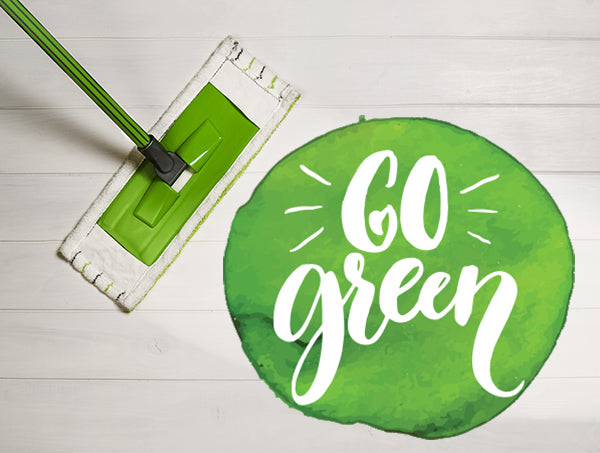What is Green Cleaning?

Green cleaning means using less toxic cleaning products that are safer for people, animals, and the environment in homes, schools, and workplaces.
Green cleaning practices can provide improved indoor air quality, reduce health risk from exposure, and protect the environment, while maintaining a healthy level of cleanliness and disinfection.
Many companies now create cleaning products that use more natural ingredients, avoiding harmful chemicals. Culleoka Company was founded to eliminate the toxicity generally associated cleaning. Their probiotic non-toxic, eco-friendly cleaning products contain multiple live strains of beneficial bacteria, producing powerful enzymes to break down foul organic matter on surfaces.
In many cases, conventional, nongreen cleaning products for the home and workplace are potentially hazardous. Besides the risk of developing a long-term illness, exposure to cleaning products can trigger asthma, leave burns, or be dangerous if someone were to ingest them.
Many of the cleaning products we use every day can be harmful to people, animals and the environment in the manufacturing process and disposal. Chemicals in cleaning products can cause skin, respiratory and allergy distress, cancer, and reproductive harm. Even anti-bacterial soaps, sponges and scrubbies are harmful. They kill bacteria essential to intestinal tract, hinder production of vitamins that protect your mouth and skin and inhibit immune system development.
Green cleaning products should not contain hazardous chemicals, and so they are likely to pose fewer health risks. They are also, typically, much safer and more suitable for use around people with weakened immune systems or health conditions.

Green cleaning products are less hazardous for the environment, too. They do not contain chemicals that cause significant air or water pollution and are often in recyclable or recycled packaging.
There is a wide range of cleaning products that the manufacturers advertise as being eco-friendly and healthier. It is important to know that some products may claim to be more natural and environmentally friendly than they actually are.
Know What to Watch Out For
Though there are more toxins out there, this is a great place to start.
Ammonia
-
Toxic when inhaled, swallowed, or touched. I remember my mom using this stuff as a kid and man, it is seriously strong stuff, not to mention potentially deadly when mixed with the wrong stuff.
Antibacterials & Disinfectants
-
These include a whole list of ingredients ranging from Bleach to Triclosan. The overuse of these types of products are blamed for antibiotic resistant bacteria, and the truth is that extreme disinfectants are rarely needed. Your DIY Household cleaners (even dish detergent), or a bit of soap and water should be most of what you’ll ever need. There are natural options, just read the labels!
Butyl Glycol, Ethylene Glycol, Monobutyl
-
This is common in most general cleaners and is dangerous to the nervous system, liver & kidneys.
Chlorine Bleach
-
Bleach is very obviously strong, corrosive and irritating to both the eyes and lungs. Avoid this stuff when at all possible – plus you’ll probably save some cash by not accidentally getting bleach spots on clothes and other household fabrics.
Petroleum
-
Solvents Many ingredients are derived from petroleum and are commonly found in many cleaning products as surfactants (watch for this term on ingredient lists). Other derivatives, including formaldehyde, can be found in a variety of household cleaners.
Phosphates
-
These are harmful to aquatic life and are often found in laundry & dish detergents.
Phthalates
-
Watch for fragrance on ingredient lists. These hormone disruptives are often components of complex synthetic fragrances. Avoid artificial scents at all costs. They are toxic and this goes for everything from cleaners to shampoo to candles. Choose options that say “Phthalate Free” or mention the use of essential oils for fragrance.
It is also important to note that a cleaning product is not necessarily safe for everyone just because people consider it to be green. A person should still take reasonable precautions to store cleaning products in a safe and secure location where children and pets cannot access them easily.
Summary
Green cleaning products are typically safer for the environment and people’s health than their non green equivalents.
A person who is interested in green cleaning and other household products should look for ones that list all their ingredients and are nontoxic, biodegradable, and free from dyes and fragrances. It is also important to remember that green does not mean it is completely safe, so people should still use precautions when using or storing these products.
~Sonny Hobbs,Founder
Culleoka Company, LCC
A little about Sonny Hobbs and The Culleoka Company
(About Us (culleokacompany.com)
All rights reserved

